August Diehl A Hidden Life
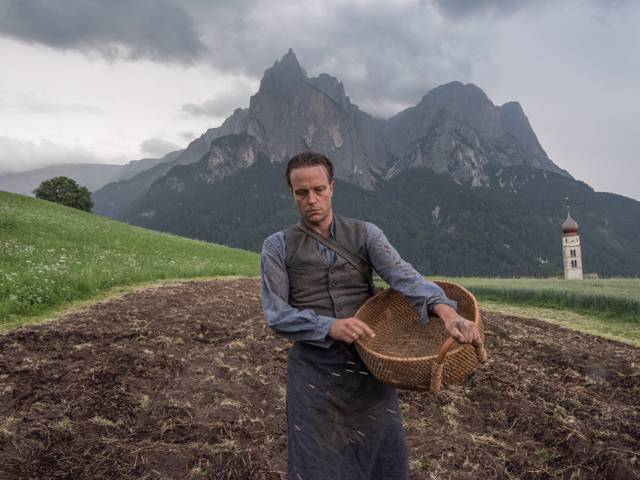
Based On Real Events
Cast: Matthias Schoenaerts, Bruno Ganz, Franz Rogowski, Michael Nyqvist, Alexander Fehling, August Diehl, Karl Markovics, Jürgen Prochnow, Ulrich Matthes, Valerie Pachner
Director: Terrence Malick
Genre: Biography, Drama
Rated: PG
Running Time: 174 minutes
Synopsis: Based on real events, from writer-director Terrence Malick, A Hidden Life is the story of an unsung hero, Franz Jägerstätter, who refused to fight for the Nazis in World War II. When the Austrian peasant farmer is faced with the threat of execution for treason, it is his unwavering faith and his love for his wife Fani and children that keep his spirit alive.
A Hidden Life
Release Date: January 30th, 2020
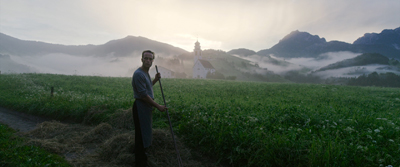 About The Production
About The Production
"…for the growing good of the world is partly dependent on unhistoric acts; and that things are not so ill with you and me as they might have been is half owing to the number who lived faithfully a hidden life, and rest in the unvisited tombs." – George Eliot
Origins
A Hidden Life is based on the true story of Franz Jägerstätter, an Austrian peasant farmer (August Diehl) who refused to take the oath of allegiance to Hitler during World War II, sacrificing everything, including his life, rather than to fight for the Nazis.
Born and raised in the village of St. Radegund, Jägerstätter is farming his land when war breaks out. Married to Franziska (Fani) (Valerie Pachner), the couple are very much in love and involved with the tight-knit community. They live a simple life in the fertile valleys and mountains of upper Austria, with the passing years marked by the arrival of the couple's three girls.
When Franz is called up to basic training, a requirement for all Austrian men, he is away from his beloved wife and children for months. Eventually, when France surrenders and it seems the war might end soon, he is sent back home. His mother and sister-in-law Resie come to live with them, and for a while things seem to go on as normal.
Instead of retreating, the war escalates, and Franz and the other men in the village are called up to fight. The first requirement of a new soldier is to swear an oath of allegiance to Adolf Hitler and the Third Reich. Despite pleas from his neighbors, fellow soldiers and commanding officers, Franz refuses the oath"objecting to Hitler and the Nazi regime. With his quiet act of resistance he asks the question, "if leaders are evil, what does one do?" With a sense of personal responsibility and the inability to do what he believes is wrong, Franz refuses.
Meanwhile Fani is left to deal with the aftermath of his decision. Not only is she now the caretaker of the family's farm as well as her three young daughters, Fani is ostracized from her community. Fear of Hitler forces once kindly neighbors to turn their backs on the Jägerstätter family.
Wrestling with the knowledge that his decision would mean arrest and likely death, Franz finds strength in Fani's love and support. He is imprisoned, first in Enns, then in Berlin" and waits months for trial. During his time in prison, he and Fani write letters to one another and give each other strength.
After months of incarceration, the case goes to trial. Franz is found guilty and sentenced to death. While Franz's faith drives him to resist taking the oath to Hitler, representatives from religious, civic, government and military institutions plead with him to disavow his beliefs and swear his allegiance, even if he is disingenuous, in order to save his life. Franz continues to stand up for his beliefs and is executed by the Third Reich in August 1943. His wife and three daughters survive.
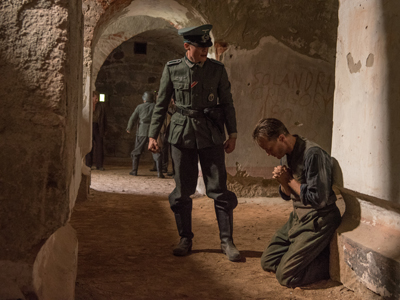 The relationship between Franz and his wife Fani endures. The film portrays their bond as deeply as Franz's devotion to his cause. At every turn Fani is there for Franz"strong, unfaltering and supportive of his path while raising their daughters and running the farm alone, eventually with help from her mother-in-law and sister.
The relationship between Franz and his wife Fani endures. The film portrays their bond as deeply as Franz's devotion to his cause. At every turn Fani is there for Franz"strong, unfaltering and supportive of his path while raising their daughters and running the farm alone, eventually with help from her mother-in-law and sister.
Terrence Malick's film draws on actual letters exchanged between Franz and Fani while Jägerstätter was in prison. The collection was edited by Erna Putz and published in English by Orbis Books.
Some lines have been added to the letters, and sometimes the letters are paraphrased.
The story was little known outside of St. Radegund, and might never have been discovered, were it not for the research of Gordon Zahn, an American who visited the village in the 1970s.
Producer Grant Hill has worked on several of Malick's films before, including The Thin Red Line. Grant notes that the themes of A Hidden Life resonated with Malick: "It's an extraordinary, enduring love story that investigates human reactions and motivations and just how far people will push for their beliefs and conscience. It asks hard questions"do you have the right to hurt people that you love in service of the greater good? Ultimately, it is a timeless story of devotion, love and forgiveness writ large. I think those aspects appealed very much to Terry," Hill says A Hidden Life differs from the director's previous films in that it is his first biographical film based on real people whose descendants are still alive. "The family had suffered enormously, and Terry wanted Franz's daughters to be involved and give their stamp of approval. We set up a meeting with them through intermediaries to find out if there was a way for him to tell the story that did justice to the storyline and made them feel comfortable. Ultimately, they were prepared to trust Terry with Franz's legacy, and we worked with them throughout production," Hill explains.
Casting Calls
In the early days of the project Terrence Malick made the decision to only cast Austrian and German actors to preserve the authenticity of the story. Introduced by executive producer Marcus Loges, Malick and Hill worked with casting director Anja Dihrberg (The Captain) had to find the right alchemy of characters. Hill comments, "Even though I've spent time in Germany and knew a lot of the actors, it was astounding how many really talented people were coming out.
When casting the principal roles of Franz and Fani it was apparent that there had to be a natural relationship between the two roles. Valerie Pachner (The Ground Beneath My Feet) emerged first and landed the role of Fani. "Valerie can light up the room. She is very strong having been brought up in that area. She knew exactly who that character would be," said Hill.
Knowing that they needed to find an exact match in Franz to Valerie's Fani, the team was nearing the end of the casting process when August Diehl (Inglourious Basterds) entered the picture. Hill remembers, "Terry had talked to August a number of times, but he was busy and couldn't get in. What was going to be our last session, Anja called late in the day and said that August was in town unexpectedly, and he could be over to the office in half an hour"he came in and read the pages with Valerie. In that first reading you could see it straight away. They moved together and they had both vulnerability and strength together."
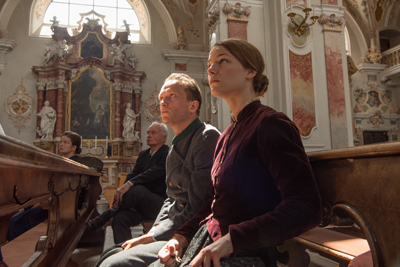 Reflecting on the casting process August Diehl says, "I remember the first time I read the script I had a lot of talks with Terrence. He was curious about me and who he was going to work with. I remember talking about life and how we each see things," says Diehl. "I grew up in France on a farm without electricity. He was curious about all this, about how I live and what my experiences were." Diehl says he treated the letters between the husband and wife almost like another script alongside Malick's.
Reflecting on the casting process August Diehl says, "I remember the first time I read the script I had a lot of talks with Terrence. He was curious about me and who he was going to work with. I remember talking about life and how we each see things," says Diehl. "I grew up in France on a farm without electricity. He was curious about all this, about how I live and what my experiences were." Diehl says he treated the letters between the husband and wife almost like another script alongside Malick's.
Valerie Pachner had her first conversations with Malick over the phone. "When he called me the first time we didn't make any small talk. We immediately talked about the world and life and in that moment, I just felt 'wow, that's where I want to go, this is someone I want to work with.'"
Pachner, who grew up in Austria, felt close to the story. "People relied on each other, and at that time that also meant that you could not break out and be different. You had to toe the line. That's why this story is so unusual."
Malick sent her a book about women in the first World War working on the farms when the men were away fighting. She also got a present from a friend: a whole book about scything.
Diehl describes working with Pachner as very special, "We were actually both very much devoting ourselves to the roles because it has so much to do with trust," he says. "You have to trust somebody very much to make this film and we risked a lot. And with Valerie I felt"from the first moment"that she was willing to do the same, to take the same risks."
For her part, Pachner describes working with Diehl as intense and intimate. "The first five or six weeks we were constantly together and constantly working," she says.
Hill credits the connection between the actors to casting director Anja Dihrberg, "She played an extraordinary role. She did a wonderful job in a very bespoke sort of way."
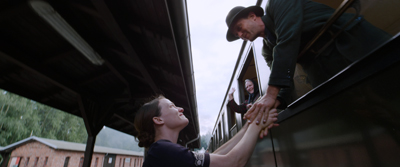 Working Day
Working Day
Cinematographer Joerg Widmer is a long time collaborator with Malick, and the experience on earlier Malick films provided a baseline language on which to build.
"Terry tends to avoid conventions and find new ways of storytelling and often gives the actors a large amount of freedom to experiment and the camera crew has to be equally open to creative possibilities," says Widmer. "Terry and I have a long history together and, as a camera and Steadicam operator on the five previous films, I was familiar with Terry's approach. So it was easy for me to understand and execute his style of framing and camera movements and to embrace natural light.
August Diehl was also familiar with Malick's work but never imagined he'd work with him on a film, let alone star in it. "It was so special. I have never experienced a film like this, we were almost constantly in a flow of shooting that allowed us to organically be in the moment ," says Diehl, describing Malick's method of filming long takes.
Valerie Pachner adds that she felt empowered by Malick's style. "We were encouraged to create ourselves and I felt Terry trusted me. We were constantly talking about if there was something else that we should do? I really felt like we are doing this together. And that's because of his trust. He trusts the people working with him."
Pachner describes Malick as "very respectful, humble and kind, and also radical. Radical in the way that he's following his thoughts and his way of seeing things all the time and inviting us to be part of that journey."
Pachner didn't want principal photography to end. "This sort of loving cooperation and collaboration is something that makes me really happy and proud at the same time to have been a part of."
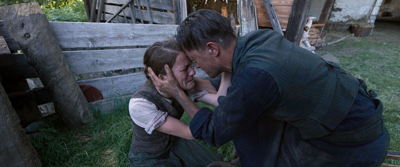 Light and Dark
Light and Dark
Early on, Malick and Widmer decided to shoot primarily using natural light, turning to artificial illumination only on rare occasions. At the mercy of nature, Widmer and his crew had to be flexible. "Changing lighting conditions required a continuous attention for stop changes to ensure proper exposure," explains cinematographer Widmer.
For all the other sets, including the prison cells, the team worked with the sun, adjusting the schedule to the appropriate time of day until they lost the light.
"The barns were always shot when the openings of the buildings provided sunlight or at least brightness," says Widmer.
The team only had to change the shooting schedule once: When the weather forecasters said it wasn't going to be sunny on the day they planned to shoot the interior of the water mill. The production was shot digitally on the Red Epic Dragon camera system. The camera was selected for its ability to handle stark contrast within a scene, preserving details in both the highlights and shadows of the image, while still maintaining realistic color.
"We were prepared to keep the camera gear small," says Widmer. "The lighting gear consisted mostly of bounce boards and blacks."
Locations
The Jägerstätters lived in St. Radegund, a small village of 500 people in Upper Austria, near Salzburg and the German border–in the same province where Hitler was born and spent his early youth–not far from Berchtesgaden, his mountain retreat during his years as head of the German state.
The production spent 24 days in South Tyrol, the northernmost province of Italy, then moved into Austria itself, shooting for a few days in St. Radegund itself. For the prison scenes, the production spent the last 14 days in Zittau and Berlin, Germany.
Supervising art director Steve Summersgill says the locations were selected for their texture, authenticity and scope.
"Most importantly we learned that the natural light levels were very much part of the decisionmaking process as to whether or not a certain location may or may not work," Summersgill says.
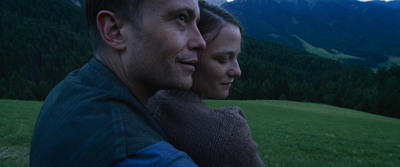 The film shot in churches and cathedrals, farms with real livestock, orchards, up mountains, in fields and along rural pathways. "Nature and the natural environment were part of the subtext and the locations provided us with a foundation to build up from," says Summersgill.
The film shot in churches and cathedrals, farms with real livestock, orchards, up mountains, in fields and along rural pathways. "Nature and the natural environment were part of the subtext and the locations provided us with a foundation to build up from," says Summersgill.
Production designer Sebastian Krawinkel carried out research on Franz Jägerstätter and the important places in his life, consulting letters and archive materials.
"We scouted some of the locations together a year in advance in order to see them in the right season," says Krawinkel. "For almost a year I had a weekly dialogue with Terry about which sets he would need and which locations and references he liked."
The production prepped in spring and shot in the summer. Two seasons were captured with a small splinter unit that came back to the locations later in the year, led by cinematographer Joerg Widmer.
Hill adds that filming on location, while at times remote and difficult, was also important to the film's overall authenticity. "Our actors trained and studied to use a scythe just the way the local farmers had for hundreds of years. Shooting in the real environment was very important to him and I think it went a long way in grounding the actors in terms of their characters and this story," Hill says.
The historic background of the story required the production to avoid modern buildings and signs of contemporary life.
"We were fortunate to be able to shoot inside a working mill, a working blacksmith's shop and several real prisons," notes Krawinkel.
One of the prisons used was Hoheneck, the notorious Stasi prison near Dresden, notorious for its inhumane conditions.
Another shot shows the exterior of Tegel prison as it stood in the Jägerstätter's day. It is still a working prison, so the production was obliged to shoot the Tegel interiors elsewhere.
A few scenes were shot in the St. Radegund locations where the events depicted actually took place–including certain interiors of the Jägerstätter house, which has over the years become a pilgrimage site, as well as by the Salzach river near St. Radegund and in the woods below the house. The clock visible on the wall of the Jägerstätter living room is the one that Fani was listening to when, at four in the afternoon on August 9, 1943, at the very hour of Franz's execution, she remembered feeling her husband's presence.
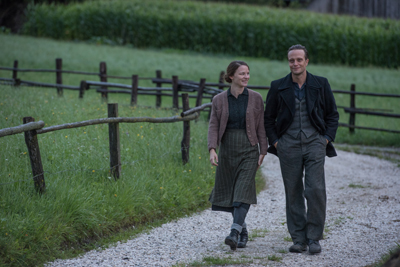 The bedroom is theirs and looks as it did then. Her embroidery still hangs on the walls. Franz and Fani's three daughters–Maria, Rosalia and Aloisa–live in, or near, St. Radegund. Fani passed away in 2013, aged 100.
The bedroom is theirs and looks as it did then. Her embroidery still hangs on the walls. Franz and Fani's three daughters–Maria, Rosalia and Aloisa–live in, or near, St. Radegund. Fani passed away in 2013, aged 100.
Valerie Pachner, the actress who plays Fani, grew up in the same province 40 miles away. A few scenes were set at the farmhouse of a Jägerstätter friend and neighbor, Eckinger.
Today, the fields around St. Radegund are covered in corn, a crop that was not grown at the time, as well as with power lines and modern houses, some immediately adjacent to the Jägerstätter's own. As a result, the production based higher up into the mountains than where the village itself lies.
The production also filmed the Third Reich Berlin court trial scene in Schoenberg in the infamous Kammergericht building. "It was scary to be inside the real courtroom where the Nazis sentenced so many to death," Krawinkel notes.
Costume Design
In addition to his work as a farmer, Franz Jägerstätter served as a sexton at the local church. He cleaned, rang the bell, and prepared weddings and funerals–without compensation and in addition to his duties as a farmer. The family's various pursuits required a wardrobe that reflected not just their interests but their economic status, all part of costume designer Lisy Christl's commitment to authenticity.
"There is always imagination with costumes. But in this case, the most important part was getting as close to the reality as possible," Christl explains. Christl, who is from Bavaria in Southern Germany, said the plethora of little museums in the mountain villages provided good research materials. "We made costumes especially for the characters but there are many original costumes out there. It was important to find nice, worn, old pieces."
"I have quite a lot of books from this time period. You can still find flea markets with original pictures," says Christl. "When we started to work in South Tyrol, I found a fantastic book about people in the mountains in these rural valleys. It was inspiring and the faces of the people were inspiring, real people working on the fields."
Christl's eye caught many small but pivotal details. For instance the Wehrmacht German army uniforms that that the Austrian recruits wore had one difference.
"The piping around the shoulder pieces were different"they were light blue for these special units (of the German army). It is very important to get it right but it is what I do in my daily working life."
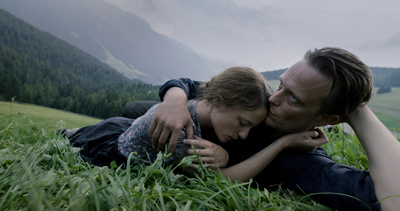 Music
Music
The film's composer James Newton Howard found his way to the film in a less traditional way. Grant Hill recalls, "We were at the point of working out if we were going to bring in a composer or whether we go with existing music. Terry had been experimenting with some of James' music from other films, and eventually reached out to him. It all happened so quickly."
Howard says scoring the film was a collaborative process. "One of the early ideas Terry brought to me, was to incorporate sounds he had captured during production such as church bells from the villages, cow and sheep bells, the saw mill, sounds from the prison, and scythes in the fields," says Howard. "I took many of those sounds and processed them into musical elements that are woven throughout the score."
Howard began his process after Malick sent him a series of short clips from the film without any sound or music.
"I wrote very loosely to picture, but we were able to establish the key thematic material and sonic identity of the score. As we moved forward, we chose to work mostly scene by scene where I would write something that he would react to, and then he would often mold the edit to what I had done," Howard explains.
Though the film takes place up against such an important historical backdrop, the film at its core is a human story. "I chose to focus on the emotional journeys and crises of conscience of the characters"writing music to reflect their story."
Howard began during the film edit. "After meeting with Terry at my studio in Los Angeles, I flew to Austin and met with his team to watch a cut of the film," he says. "We worked primarily between March and May of 2018 and recorded everything in early June at Abbey Road Studios in London. "I felt the orchestra was best to reflect the vistas of St. Radegund. The solo violin throughout the film embodies the connection between our two main characters"performed by the violinist James Ehnes."
Release Date: January 30th, 2020
MORE





